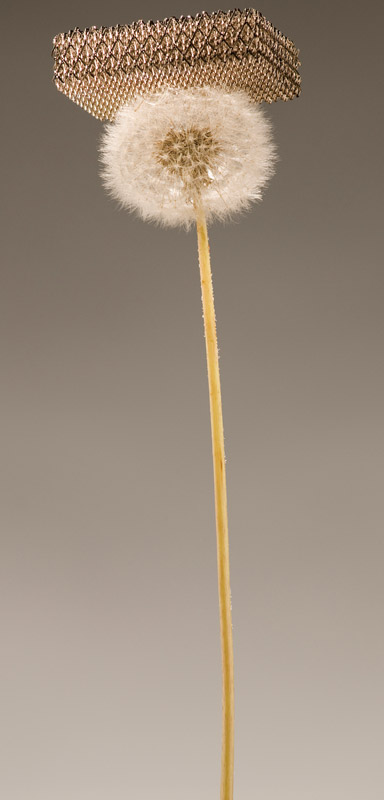Building ultralight lattices
DOI: 10.1063/PT.3.1385
The stiffness-to-weight ratio is an important figure of merit for structural engineers. But in the ultralight regime—at densities of 10 mg/cm3 or less—few material options exist; one must turn to aerogels or foams. Architecture also matters: Both kinds of material form as a disordered network of cells whose random distribution renders the gel or solid far less stiff than one might predict based on its parent constituents—silica, carbon, polymer, or metal—in bulk form.
Fortunately, engineers have long known how to design structures whose order and symmetry enhance their mechanical properties. The Eiffel Tower, for instance, has a relative density—its mass per unit volume divided by the density of the iron in it—similar to that of aerogels, though the tower is clearly more structurally robust. 1 Extending such trusses and frames to the microscopic scale and yet processing them on the macroscopic scale is the vision behind a new method for making ultralow-density materials out of metallic microlattices. 2
Developers Alan Jacobsen, Tobias Schaedler, and William Carter (all at HRL Laboratories, Malibu, California) and their colleagues start with a liquid photopolymer that solidifies when exposed to UV light. Passed through a patterned mask above the polymer, the light creates an interconnected, periodic array of fibers, each a few hundred microns thick, which the researchers then coat with a 100-nm film of nickel–phosphorus. They rinse the microlattice to etch away the polymer template, leaving a hollowed-out network of metal tubes. So diaphanous is the result that it can collapse under surface tension when lifted from the rinse bath; the lowest-density structures must be freeze dried.
The metallic microlattice, shown here atop a dandelion, could be made at a density as low as 0.9 mg/cm3, below that of the lowest-density aerogels but with a Young’s modulus—a measure of stiffness—nearly two orders of magnitude greater. Although the researchers opted for an octahedral unit cell, they could have created a variety of architectures by altering the mask pattern and the light’s angle of incidence. The new method thus offers a greater level of flexibility than ones currently used to make metal foams and aerogels.
The method also allows control over the scale of lattice features, which can span six orders of magnitude—from millimeter-sized cells to micron-wide hollow tubes and their nanometer-thick walls. Indeed, the tiny thickness-to-diameter ratio, argue the researchers, is likely responsible for the materials’ behavior in compression experiments. Astonishingly, the microlattice, though made of brittle nickel, recovers nearly completely—and repeatedly—after being squeezed to as little as 50% of its original size.
Metal foams and higher-density metal lattices deform plastically. But the hollow tubes in the new material act like soda straws, storing energy as they buckle elastically. “Even at stresses that crack a bending tube,” says Carter, “the damage is rarely catastrophic and is localized on either side of the crack, leaving most of the tube undamaged.”
Aerogels and metal foams have found widespread use in thermal insulation, acoustic and vibrational damping, battery electrodes, catalysts, and elsewhere (see the article by John Banhart and Denis Weaire in PHYSICS TODAY, July 2002, page 37

DAN LITTLE/HRL LABORATORIES

References
1. R. Lakes, Nature 361, 511 (1993). https://doi.org/10.1038/361511a0
2. T. A. Schaedler et al., Science 334, 962 (2011).https://doi.org/10.1126/science.1211649
